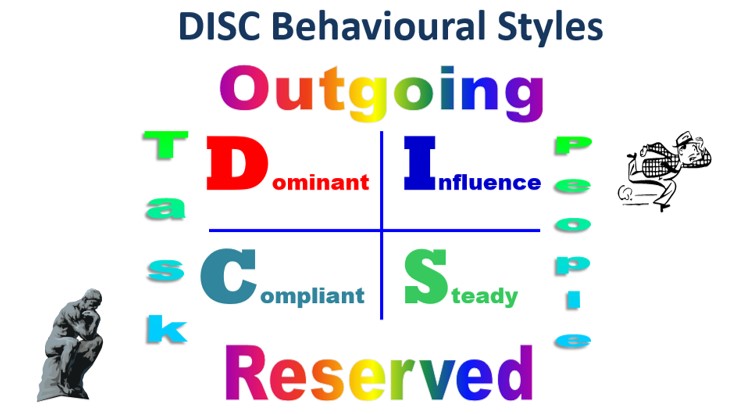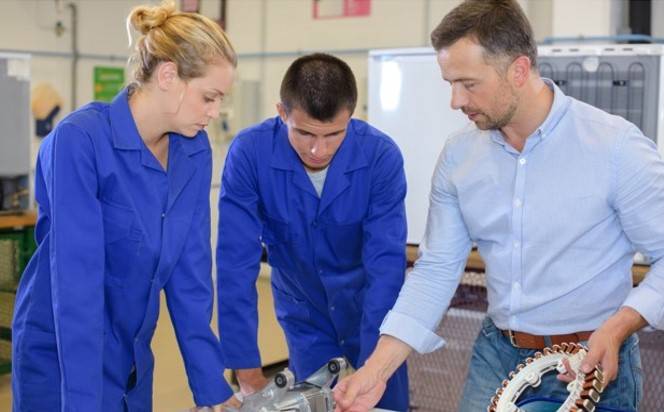The work attitudes of employees greatly influences their job performance, as you’d well know if you’ve been in business for 5 years and employ people.
Few business owners take the time to really learn about positive work attitudes that employees can and should have, if you want to even obtain true business freedom.
Here’s a list of positive work attitudes of ideal employees…
- Arrive at work before they are meant to, every time
- Stay at work until certain tasks are complete, and never ‘clock-watch’
- Ask questions when they need instructions and remember your answers given to them
- Admit when they don’t know something or need help or when they make a mistake
- Rarely complain about anything
- They are reliable, dependable and predictable
Employees with all these attributes sound great, but how many employees do you have with all of these attributes?
Before you can find an employee with a great work attitude when hiring and interviewing candidates, you need to be fully aware of what other traits make up an ideal employee.
People’s Attitudes Can Be Described Like Tree Branches

One important illustration of a great attitude can be described as flexibility.
Think of a tree branch.
Dead tree branches don’t bend, they snap. They have little flexibility.
A willow branch has extreme flexibility. One of their thin, long branches can be tied in a knot without it snapping and that flexibility is can be seen in great attitude people.
Flexibility makes them accommodating and willing to do what you want, even if it means changing their role sometimes.
Business owners often ask, ‘how can you improve an employees attitude?’
My experience leads to a reply of ‘you usually can’t.’ Attitudes are not easy to change and can require months of work. It’s rarely something you can change in minutes or hours.
Sometimes you can give an employee a ‘wake-up’ call with a written warning, but most times when an employee has a poor attitude its best to think about replacing them.
Attitude can also be summed up with these important values…
- Integrity
- Initiative
Integrity is being good for your word, to do what you say and understand the expectations of others on your behaviour and work.
Initiative is recognising the opportunity to act when needed and beneficial, without waiting to be asked.
Attitude is Important, but so too is Aptitude
Aptitude is a very different personality trait.
Aptitude is the suitability to a role with a person’s inherent or latent potential skills.
It’s about whether someone has the personality traits suited to the role so that they are a ’round peg in a round hole.’
For example, some people are naturally good thinkers and problem solvers (introverts!)
Some people are better at the ‘front line’ of business, meeting and greeting people confidently (extroverts!)
A business like a mechanical repairer would want an employee with ‘hands-on’ skills, that can ‘hold a spanner,’ learn very fast, has skillful fingers and hands and isn’t concerned about getting their hands dirty or bruised.
A person who has lived on a keyboard and never worked on a car probably won’t have much aptitude for a mechanical repair job, but could probably be good as a software glitch finder, data entry role or software user.
The Best Aptitude Finding Tool
After decades of looking at dozens of personality and behaviour assessing tools, the best one has to be DISC Profiling. It’s simple, easy to understand quickly and accurate with what it can tell you about a person at work.
A DISC Profile is determined by a series of questions provided with the tool and in about 10 minutes they are answered and plotted on a two or three graph page to show the results.
DISC Profiling can be learned initially in 5 to 10 minutes, and very thoroughly understood and “mastered” in 2 months of part-time study and practical use.
The rough explanation of DISC Profiles looks like this…

The D for Dominant and I for Influence Profile people are like runners. They think and move fast and change directions and focus fast.
The S for Steady and S for Compliant Profile people are thinkers. Their minds digest content and information so they stick the course instead of changing directions.
D and I profiles like change and embrace it whereas S and C profiles not as much. They are happy doing the same tasks over and over.
This is super important to know for your business because some tasks require a lot of interaction and talking to people.
I and S profiles are people people. They love talking with and interacting with people and prefer it.
D and C profile people are great for leaving them on their own to complete tasks. They prefer to work alone.

Some people are best suited for leadership and sales roles, which are typically D and I profile people.
In other words, they have a great aptitude for it.
S and C profile people are great in technical, quality, repetitive work roles. That’s their aptitude.
It’s also important to know your own DISC Profile to see where your “comfort zone” is, your aptitude and interests in certain tasks in a business.
Which Profile Likes Facts and Figures?
When a business owner has a lot of C in their profile Graph shown by the C point being above the horizontal line for their “Adapted” result, they tend to be good with facts, figures and spreadsheets.
When the C component is very low, they don’t tend to have a love or skill with numbers. That’s not always the case as D profile people can like figures as well.
DISC Profiling isn’t a black and white science. It’s an indicator of tendencies in a person’s behaviour.
In just a few paragraphs of text, are you starting to understand it and see value in the subject?
If so, you’re not alone as that’s why I consider it the No.1 tool for business success there is!
Understanding employee’s DISC Profiles deeply and thoroughly, to put ’round pegs in round holes with potential new employees is all part of a big section of team development including in my business mentoring program.
Identifying Attitudes and Aptitudes in Employees
This is where it gets very interesting.
Your ability to identify both of these very important personality traits has a great influence on your ability to be successful as a business owner.
The first employee you hire, doubles your business’ size. The next one only adds a third to the productivity and potential income.
Without hiring ideal employees the business grows slowly, stress on the owner starts and they often end up ‘running a busyness’ because their employees don’t do 100% of their work, leaving something for the owner to do.
With a great team, that is dependable, reliable and with high integrity it can free you up as the owner, not just hours but days in your week.
So you want an employee who has a great attitude, but how can you spot one?
First of all it begins with writing a fantastic recruitment ad.
You need to “attract” a great attitude employee to your business through the use of the ad wording.
A great attitude employee won’t be unemployed right now. They will be working for a “jerk” and feeling under valued and are looking for a great business to work for.
Your ad has to communicate you are a great business, which 95% of all recruitment ads don’t do!
They typical recruitment ads are all about experience and qualifications and lists them – what the owner is looking for.
There’s not much to do with attitude or “attracting” the candidate in that.
When you use an ad like this, which comes about because every business owner copies everyone else’s ad, you aren’t going attractive to the ideal ‘great’ candidates, or not in many numbers. They don’t bother applying because the ad hasn’t inspired or persuaded them that its a great business to work for.
For decades my clients have all wanted help with recruitment or they couldn’t grow their business.
That meant having to apply advanced “copywriting” techniques to ad writing for employees. But it’s not just copywriting skills that are required, its a deep understanding of the emotional needs and interests of what employees look for in a business or workplace environment and including wording along those lines in the ad.
Dozens of clients have said, ‘I can’t find good staff. I’ve run ads lots of times, but can’t find good people.’
I know how they feel, because its very common to the majority of businesses – all experiencing the same thing.
Often clients have said they only get 10 or 20 applicants, when the ad I’ve supplied has gotten over 100 or 200 sometimes. It’s all about the ad. That’s the secret to attracting great applicants.
Without turning this blog post into a 1,000 word explanation of writing ads only, its something to mention here as this is why some businesses never hire great people. Their ads repel them instead of attracting them.
Great attitude people don’t apply to poorly worded ads.
When your ad runs, next you want to determine attitudes. Remember the word flexibility? That needs to be applied here now.

You want to check the flexibility of the candidates, again something that could fill 1,000 word blog post alone.
Some clients have interviewed people at 5.30am, while others on a Saturday afternoon.
The keen, “flexible” ones show up, the rest don’t.
A training business on light aeroplane pilot licenses did exactly that, with the interviews all being at 5.30am. They were looking for ‘needles in haystack’ because of the role. There was no point placing the ad on Seek or Facebook, but by using the ad on LinkedIn is a certain way they got 7 applicants. That doesn’t seem like many, but for this business it was a record!
Only one person turned up, but they had a great attitude and was given the position. It doesn’t matter how many applicants you get, if you only want one position fulled, but the quality of them matters.
When you have interviewed people with tricky, flexibility testing questions, you should ideally get the short list of candidates down to 2 people. Then you are best to DISC Profile them both to see what their Profiled results are to determine their aptitude.
Keep in mind whether the position you have for them is “task” orientated or “people” orientated.
Also, do you need a leader or a follower/responder?
The suitability of the role to the person’s DISC Profile is important.

If you put a great attitude person in a job role that doesn’t suit their DISC Profile, they can do it, but its putting them under tension.
Sooner or later they may get sick of the job as a result because it’s not one they love as they’re not using their skills and talents regularly. This is why DISC Profiling is so important and beneficial to learn.
When a person doesn’t enjoy their job, that can be seen as having a poor attitude.
When you combine both a great attitude and great aptitude for an employee, combine it with regular team meetings, yet another 1,000 word topic, you’ll have a very happy, productive, reliable, loyal employee who will never want to leave you!
Is that worth learning all about people for?
It can change your whole life, business success and level of fulfillment from your business.
No more frustrations with employees, no more let downs, no more having to put employees off and spending months training new ones.
Learning isn’t expensive, ignorance is.
You only pay to learn once, and for recruitment skills to build a complete system for your business it only one month. Then you benefit for years.
How long have you put up with poor to average attitude employees?
What difference would it make to your business, and your state of mind to have a full recruitment system that you can use to hire good and great people every time?
And how many years do you intend to own a business for?
Recruitment is one key ingredient of business success.
The other is developing a great team, that works without any supervision, is dependable and reliable, working hard without big financial rewards.
But that’s the topic of team development and HR solutions for another day!


2 replies to "How to Improve Attitudes, Behaviour and Employee’s Job Performance"
Tim, this is one of your best articles, Congratulations.
i really enjoyed it, …….and it resonated with me, well done.
Thanks Con, glad to hear you enjoyed it.